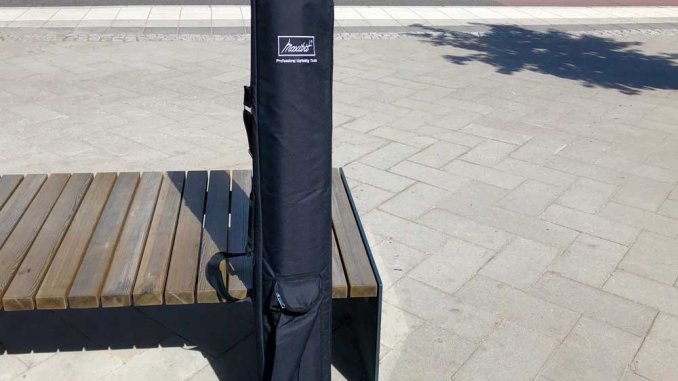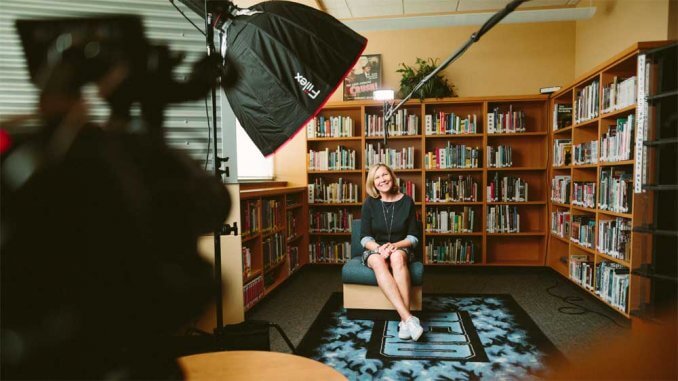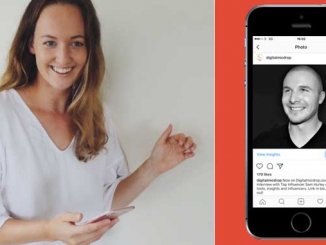We love speaking to influencers and get their take on the world of marketing. Recently, we had a chance to catch up with Swedish influencer Nina Jansdotter for a quick-fire round of questions about marketing trends, her love of People-to-People marketing and why traditional branded ads don’t work anymore.
This is Nina Jansdotter:
Nina Jansdotter is a Swedish PR consultant, author of more than a handful of self-help books, columnist, frequent public speaker, career coach and an influencer. Nina is also an avid contributor and debater on LinkedIn and if you follow her, you will never lack thought-provoking content in your news feed. If you know Swedish, that is. Needless to say, she is keeping herself busy.
In Sweden, Nina has been credited with introducing a hugely popular social networking phenomenon called ‘network threads’, which essentially means that a person with a large network starts a thread on LinkedIn where others can introduce themselves and build their networks. People-to-People marketing at its finest.
“People like doing business with people, not with logos and polished brochures littered with buzz words.”
Hi Nina! We know you are a busy lady these days, so we’ll just cut straight to the chase. First question: What’s the next thing in marketing?
“Hi Digital Mic Drop! That’s a really good question and, to be honest, something all marketers should think about and make sure they’re ahead of the game. Let me approach the question like this:
The next big thing in marketing should be that more and more marketers understand that you won’t get very far with ad-like posts in social media nowadays.
The reason why I’m saying that is because I see that a lot of signs are pointing towards the fact that many marketers, whom often represent big brands, in social media, and online in general, still don’t get the point.
The best way to build a strong brand today is to let the people in the company become brand ambassadors through their personalities, values, and passions. That’s what really sells.
People like doing business with people, not with logos and polished brochures littered with buzz words.”
“I usually scroll past pure marketing posts without batting an eye.”
As an influencer, you consume a lot of online content. What is good content? What makes you hit the Share button?
“Something that affects me somehow. Personally, I am a knowledge-seeker so when I feel like I’ve learned something valuable, I often hit like.
Learning can, of course, happen in many ways. It can be a to-the-point list-article, a movie with a message that sparks my interest or a chronicle with an unexpected twist at the end.
The ways to learn are many, but knowledge is worth its weight in gold to me so when someone shares their knowledge and experiences in an inspiring way, I am happy to comment on it. I usually scroll past pure marketing posts without batting an eye.”
When we asked Sam Hurley, one of the world’s leading influencers, the same question a while back, Sam told us that he’ll hit the like button when content has a purpose, looks good and is easy to share.
What is the one marketing change that marketers should implement right now in order to be competitive over the next few years?
“Video will slowly but surely take over, so that’s definitely something that marketers should pay attention to and start figuring out right now.
Especially live streaming broadcasts will entice viewers - and preferably with a documentary film feel without commercial breaks.
The feeling of ‘real’ and authentic is key. Let the viewers get a peek behind the curtain, create a feeling of ‘being there’ and let them get acquainted with real human beings. That way, it’ll be more exciting to join and follow, especially for more flighty viewers who watch from computers or smartphones.”
If you could ask every online marketer to stop doing just one thing right now, what would that be?
“Well, as I said earlier, stop posting ad-like content on social media. If you want to advertise, buy an ad. Let the social part be what it is – social. Instead, interact in a way that is appropriate in the ‘living room’ of the social platform you are sharing on.
Also, I encourage every marketer to not be too much of a copycat and instead, try to create a unique way of communicate that suits their own individual style.
Don’t get me wrong, you can always find inspiration in others, but it becomes strange if you don’t have a tone of your own in what you write. This holds true for both people and businesses.”
If we gave you a 50,000 USD marketing budget for online consumer marketing, how would you spend it?
“Wow! I am used to working with hardly any marketing budget at all so I have become a bit of a master of getting reach without paying for it.
I actually see it as a bit of a sport. If you ask me, it’s almost like ‘cheating’ when you have that much money to help you boost your message.
Having said that, if someone gave me that much money to play around with, I would probably mostly be interested in organizing some sort of interactive live event where people would be able to meet in person and, at the same time, communicate and interact with thousands of people who are following the event online.
That would be an exciting and challenging mix and the event would, of course, be filled to the brim with amazing content before, during and after.”
There’s a lot of buzz around video marketing right now. Should we pay attention?
“Yes, you really should. People like meeting and communicating with people. In a video, the full expression of a human can be brought out so much easier than through, for example, written content.
A video tells a much better story about a person’s personality and shows their body language, you can hear their tone of voice, pauses, get eye contact, and motions and postures paints a picture about someone’s attitude in a more holistic way. Video makes us curious and hopefully, also makes us want to watch to find out more. It’s a natural effect since we are social creatures.”
When we, once again, cross-reference Nina’s response to this question with Sam Hurley‘s, we have consensus. Sam says, in his typical pragmatic way: “Video + human faces = Trust, and trust = Sales”
Why are influencers important?
“Because influencers are trusted by a large captive audience, which of course means that you get their attention if you communicate your message through the influencer.
This will, of course, have to be done carefully and with the utmost respect for both the influencer and their followers.
Many influencers are, and rightly so, careful about communicating messages that can be seen as too commercial as this can decrease the value of the brand that they’ve spent a lot of time and energy to build.
If a marketer is looking to propose a partnership for an influencer it’s important to make sure it’s a true win-win partnership, and not just from a monetary point of view.
If a marketer would approach me personally with a partnership, I would be more likely to consider a long-term partnership than some one-off thing.
If the immediate goal is just an instant boost for something, it is often better to spend money on a sponsored post.
Spend some time to try and understand who the influencer is, what he or she is passionate about and would like to achieve on a deeper level before presenting your proposal.
When you feel like you have a good understanding and are ready to approach the influencer, keep in mind that a fruitful dialogue will take you further than if you try and take command.
I have realized that many influencers are somewhat lone wolves and have different aspirations than traditional companies. Many influencers I know, and this is myself included, say that they feel like real outsiders who have never really fit in with traditional systems like school, normal employment and so on.”
How can an influencer help a brand to success?
“Simple. As a brand, you can reach your desired target audience easier and build trust with your audience since the influencer is vouching for the product or service. This holds true for both niche and general audiences.
It’s a bit like a ‘tribe’ following their leader. Nowadays, the term ‘micro-influencers’ is popping up more and more. These are influencers who don’t necessarily have a huge following, but their followers usually have a very niche interest, which means that marketing through a micro-influencer will be a lot more targeted than, for example, a full-page ad in a newspaper.
I love these ‘nerds’ who spend their time on incredibly niche topics. They write blogs and post videos and are truly passionate about educating, informing and building networks with like-minded people. It’s great to see that they are now also able to actually get paid for their hard work from partnerships. Kudos!
Any marketer that consider approaching these influencers should, therefore, do so with the utmost respect and humility, because they truly deserve it.”
Thank you, Nina! Look for us in your network threads and we’ll keep an eye out for your insightful content!
More on influencer marketing:
Our interview with Mark Schaefer from earlier this year underlines the importance and value of influencers once again. Mark, with his extensive expertise from the marketing industry, explained that we are marching toward an ad-free world, that influence marketing will become a mainstream practice and that people will trust content shared by a stranger before they trust ads.

You’ve just read an article by Peter Helin. Now it’s your turn! Leave your comments below.
Peter Helin is the co-founder of Digital Mic Drop as well as a multi-disciplinary marketer. Peter juggles most of the content that you’ll find here on Digital Mic Drop and he is also helping Digital Mic Drop’s enterprise clients to success through consultation on all things digital marketing, copywriting, content creation and SEO projects. Things like that.
If you would like to get in touch, simply shoot him an email on [email protected].






Leave a Reply